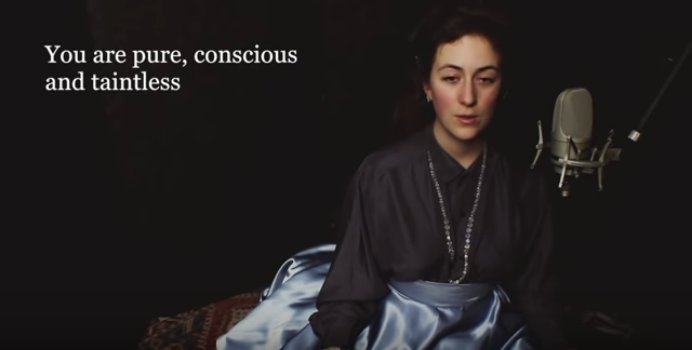The Markandeya Purana
This is an ancient Sanskrit scripture. I watched part of it being sung on youtube:
https://www.youtube.com/watch?v=uDd3iupKUyI&feature=youtu.be

...you must watch it!
It is a mother singing to her child. The singing is beautiful, and
the English translation is so nice, to know what she is singing about.
The ancient Sanskrit scriptures were all written to be sung. In fact,
some of them pre-date being written, they were passed on orally.
I became curious about the origin of the Markandeya Purana, and found this Wikipedia page:
https://en.wikipedia.org/wiki/Markandeya_Purana
Scholars think that it dates back to around 250 CE (AD). In written
form anyway. The earliest surviving text is on palm-leaf, dated at the
11th Century CE:

We know about the pantheon of Gods in Hindu mythology, something that
many outsiders find confusing. It is not so well known that there is a
core teaching that addresses a singular Supreme Diety. The
Markandeya Purana is one of these. Quoting from the Wikipedia:
The Markandeya text is one of the Puranas that lacks a sectarian presentation of ideas in favor of any particular god, and it is rare to read any deity being invoked or deity prayers in the entire text.
Regarding a diety, it is singular, unknowable, the creator and sustainer. Furthermore, this diety is feminine:
The Markandeya Purana is probably one of the oldest in Purana genre of Hindu literature, among the most interesting and important, states Ludo Rocher. It is famous for including the Devi Mahatmya within it, the oldest known treatise on Devi (goddess) as the Supreme Truth and creator of the universe. The text is considered as a central text of the Hindu Goddess-related Shaktism tradition, with an extraordinary expression of reverence for the feminine.
What does need to be understood about these scriptures is that the
Gods and Goddesses are manifestations of the Supreme. As the Wikipedia
states, the Devi Mahatmya scripture, which is part of markandeya Purana,
describes a battle between good and evil, in which the Supreme Diety
manifests as the Goddess Durga.
Another point to consider, is that the Puranas were not written as an
integrated whole, rather, they accumulated over time. Quoting from the
Wikipedia:
Yet another point: some of these ancient texts were designed to be acted out. Before TV and radio, when most people were illiterate, traveling actors would enact these stories. So, they had to have entertainment value, as well as carry a deep message.As they exist today, the Puranas are a stratified literature. Each titled work consists of material that has grown by numerous accretions in successive historical eras. Thus no Purana has a single date of composition. (...) It is as if they were libraries to which new volumes have been continuously added, not necessarily at the end of the shelf, but randomly.
Tags: insight
